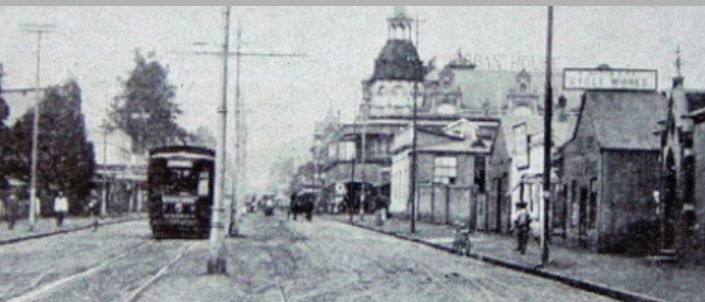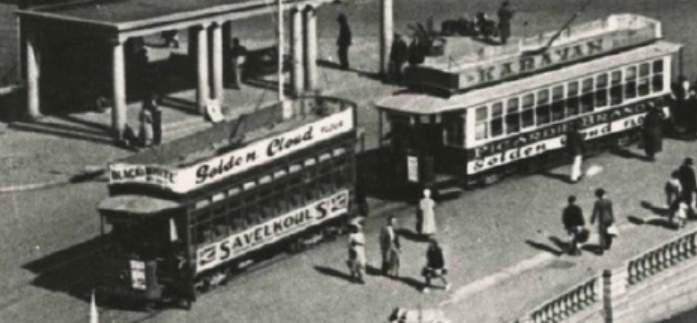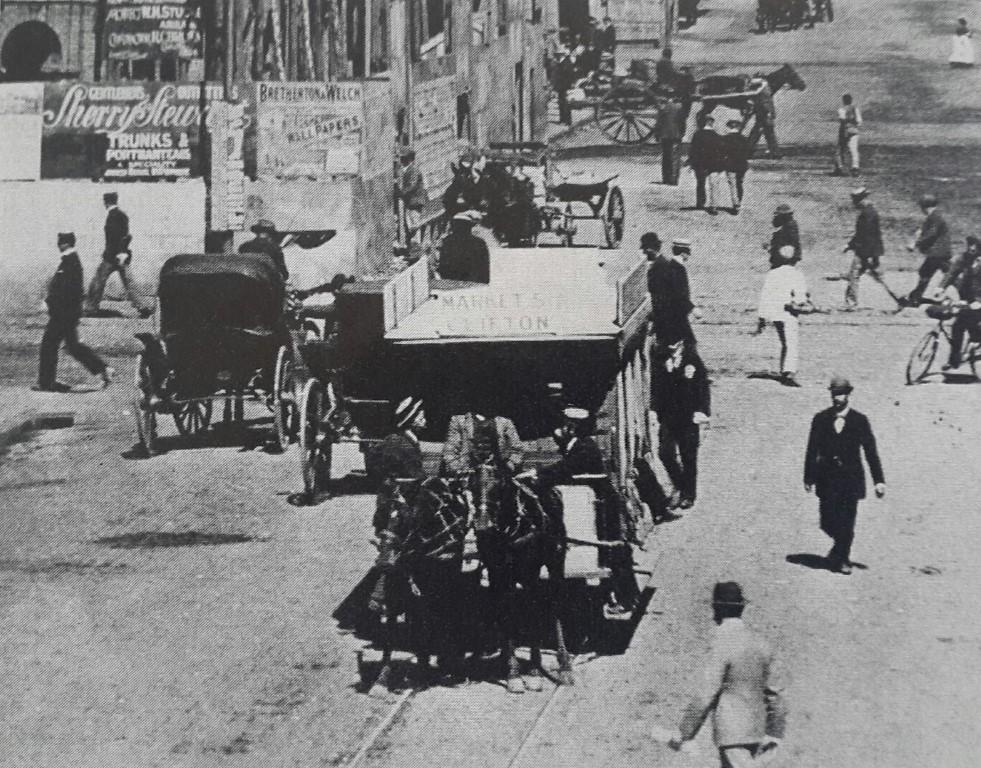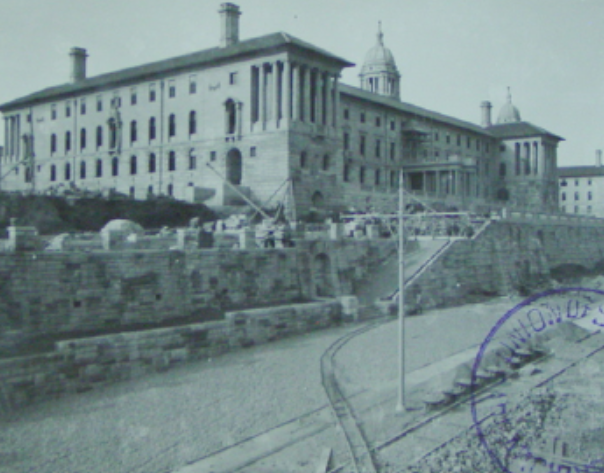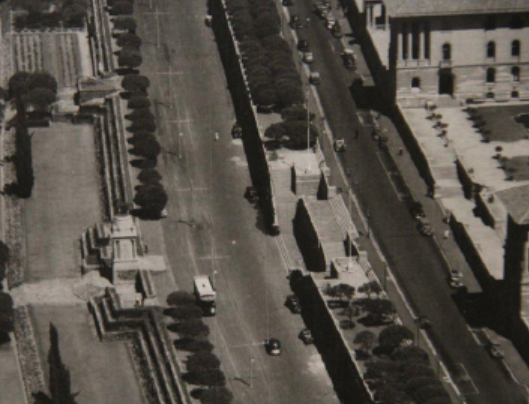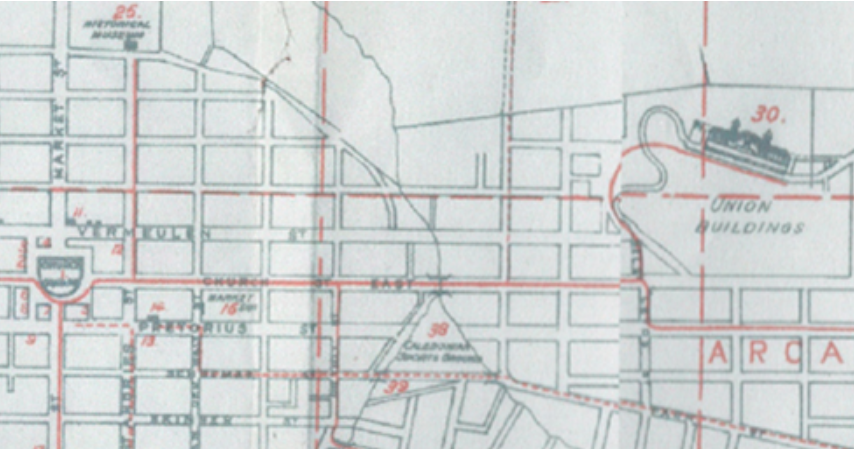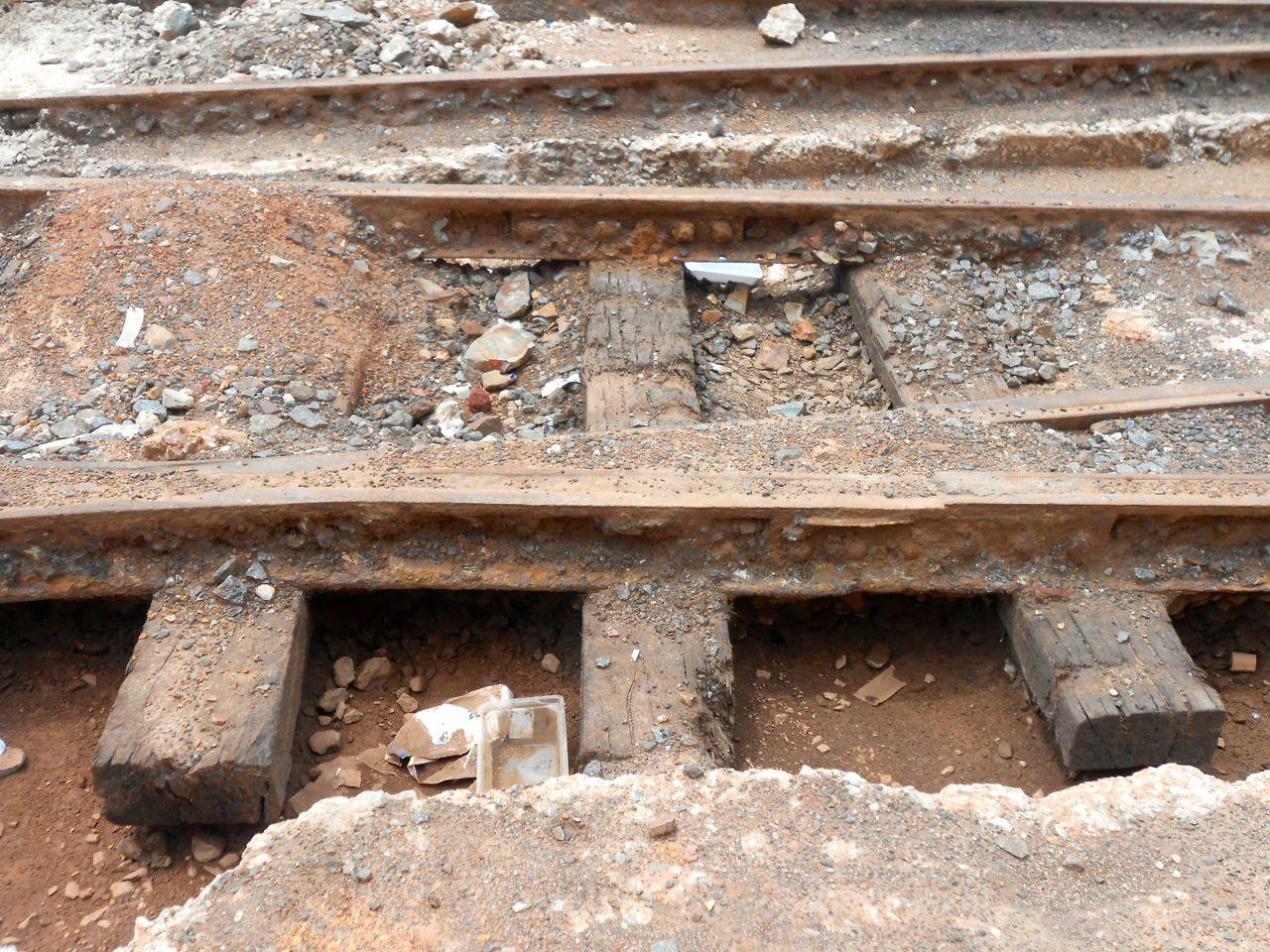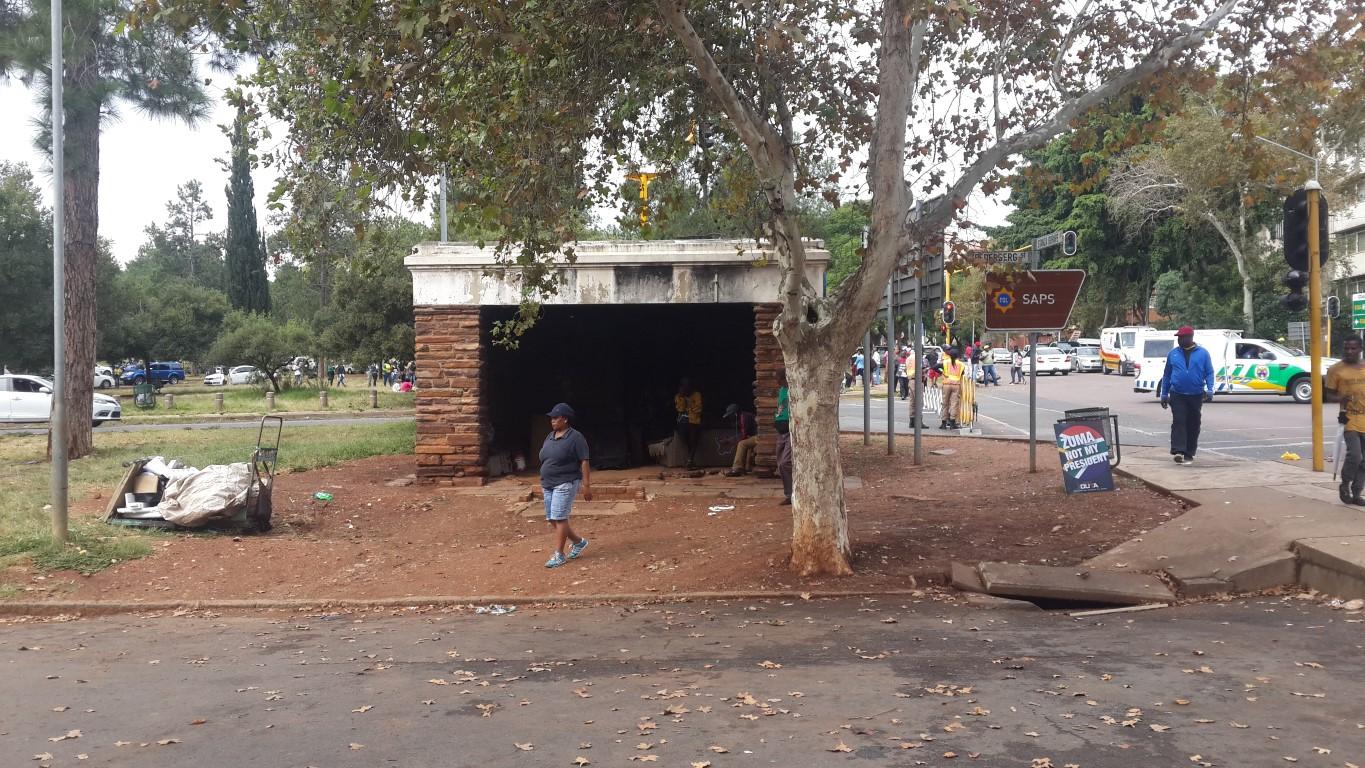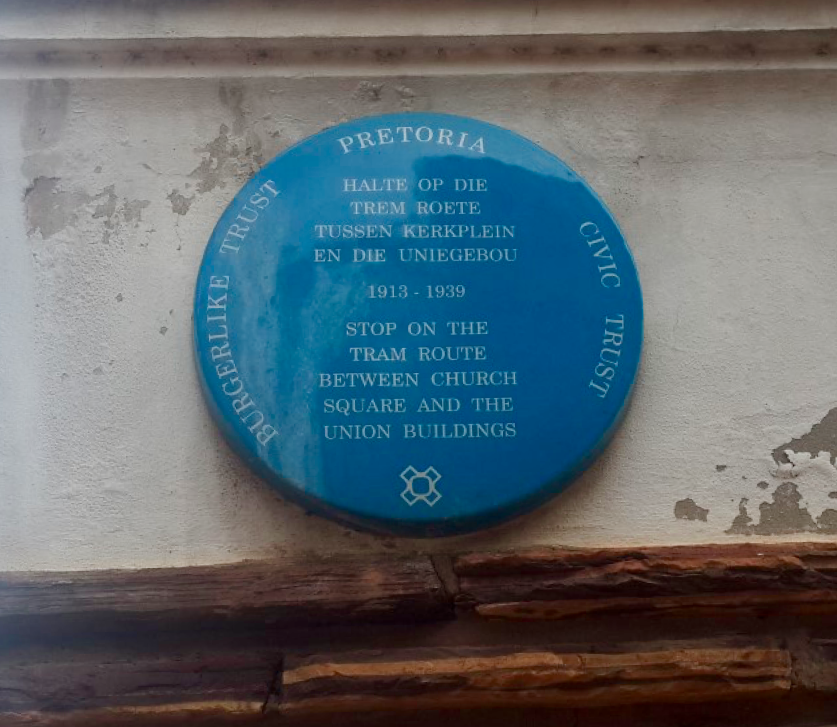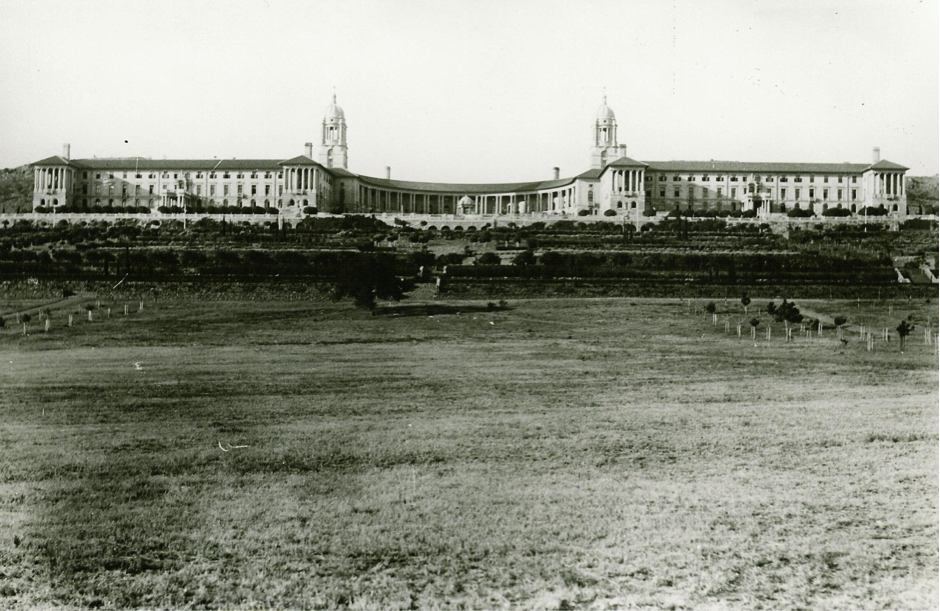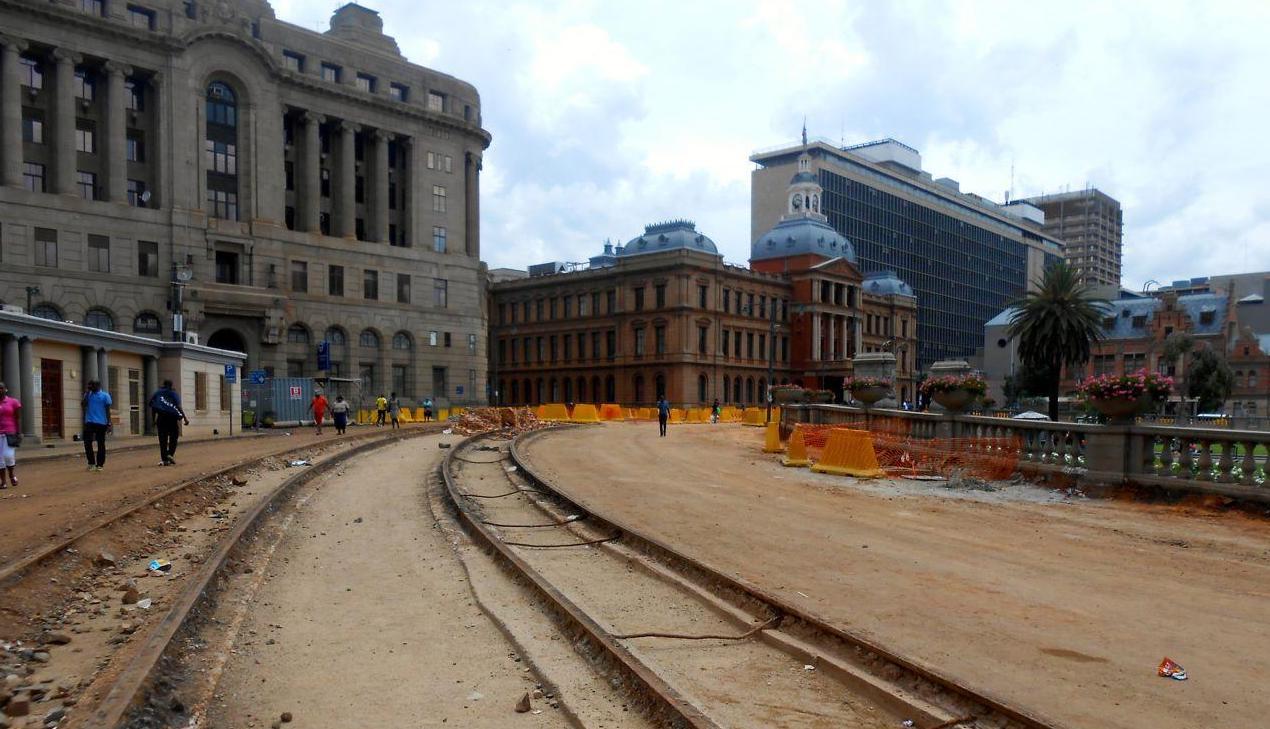
Disclaimer: Any views expressed by individuals and organisations are their own and do not in any way represent the views of The Heritage Portal. If you find any mistakes or historical inaccuracies, please contact the editor.
Residents of Arcadia and Pretoria are mostly unaware that trams were used to serve as public transport in the early 1900s, later being replaced by trolley buses and eventually buses as we know them today.
Trams are loosely defined as light rail vehicles running on steel tracks, serving as urban public transport, designed to travel on streets, sharing road space with other traffic and pedestrians.
Tram travelling along Church Street. Note tracks both sides of the transmission posts (via The Arcadian)
Two trams waiting at Church Square with the Tram Station in the background. Note the poles for the overhead powerlines onto which the trams were connected (via The Arcadian)
Horse drawn trams were first introduced in Pretoria in 1897 by The Pretoria Tramway Company with eight trams and 50 horses. When the horses were needed during the Boer War, the service temporarily came to a standstill, but resumed after the war in 1903.
Horse-drawn tram in Johannesburg (South African Panorama 1961)
Each tram had two operation stations, fore and aft, each with a bell to warn pedestrians of the approaching tram.
During 1910 the horse drawn trams were replaced by 14 electric trams. The Tram shed, corner of van der Walt and Schoeman Street, built with red Kirkness bricks from the Groenkloof quarry, was completed in 1912.
The tram routes were initially laid out from Church Square to the Pretoria Station, the Zoo, Sunnyside, Pretoria West, and the Ou Volks Hospitaal and only later extended to the Union Buildings and Arcadia south of Church Street, turning into Pretorius Street east of Leyds Street. This route only linked directly to Church Square.
Tram tracks and transmission poles on the lower road during the completion of the Union Buildings Circa 1913 (via The Arcadian)
The only known photo in existence of a tram parked near the Delville Wood Memorial at the Union Buildings (via The Arcadian)
Map of Pretoria Tram Routes (via The Arcadian)
The map shows the Tram Routes in solid red lines starting from Church Square towards the Union Buildings and to all the other destinations. A tram shelter is still in existence at the Church Street turn off into Nel Street, albeit in a bad condition.
The first trip was from Church Square to Sunnyside. The last trip was made from Church Square to the Station and then parked in the Tram Shed in van der Walt Street on the 19th August 1939.
It is unclear wat happened to the trams after being replaced by trolley buses, which still used the overhead powerlines but ran on rubber wheels independent of the tracks.
During that time Church Square functioned as an active centre of the city to be developed with fountains gardens and paving.
Tram tracks unearthed during the Church Square upgrade for the 2014 A Re Yeng rapid buses (The Heritage Portal)
Close-up of the tram tracks (The Heritage Portal)
Due to the steep hill from the Nel Street turn off the tracks had to take a wide turn toward the Union Buildings thereby to decrease the gradient. This led the route through the pine tree wood still in existence west of the road snaking up to the Union Buildings.
Is there anybody out there to help us find more photos and information on trams in Pretoria? Details can be sent to penny@arra.co.za.
Information was sourced from the Union Buildings CMP collection, newspaper articles in the Pretoria News of 27 January 2014, the Pretoria East Record of 11 June 2014 and from Google images and Wikipedia.
Anecdotal story of Pretoria Trams circa 1933–1937, relating to the Union Buildings Tram Line
Below is an anecdote by Mr Courtenay Smithers, who was in the process of writing notes about his early days in Pretoria for his family. It gives us a glimpse into the history of trams in Pretoria, relating to the tram line to the Union Buildings, of which very little is known. The story was first published on the website sa-transport.co.za
Excerpts of what he wrote:
There were rattley old trams which ran to the Union Buildings but they ran along Leyds Street to and from Church Street where they connected with trams from Church Square, at the centre of town. For most of the day (and only on working days, if I remember correctly) there was only one tram which made the short run from Church Street to the Union Buildings and back, a small one which could carry only half the number of passengers which the usual "big" trams could carry It seldom carried more than one or two passengers on each trip and was often empty.
Tram stop on the journey from Church Square to the Union Buildings (The Heritage Portal)
Blue Plaque (The Heritage Portal)
For many years the driver and conductor of the small tram were always the same men and we came to know them quite well. The conductor was a big, jovial, man who chatted to us as we ran alongside the tram but the driver was a much more surly character who didn’t like us at all. He would shout at us when we did so but this, of course, only encouraged us all the more to run alongside the tram and chat to the conductor.
The driver could do little to stop us. This small tram ran along Leyds Street to Vermeulen Street and then wound its way up the hill to join the road which ran along in front of the Union Buildings.
Old photo of the Union Buildings (via ARRA)
Now there is a road which follows the curving route up the hill where the little tram took its slow climb up the hill, making a whining noise in its low gear. Keeping up with the struggling tram was easy for us. In those days the tram line passed between the pine trees of the plantation which grew on the hillside. One of the boys who lived in Hamilton Avenue was a good shot with a "catty" and he enjoyed showing off his skill by bringing down a dove or two from the pines. The driver of the train didn’t like the boy; I suspect he was worried in case the boy let fly at him or the tram, but he never did.
Small boys usually know where to "draw the line". Inevitably, small boys being small boys, we sometimes put a little stone on the line for the tram to crush (with a loud bang, of course) as it went over it. We had our special hiding places amongst the trees where we couldn’t be seen but from where we could have a view of the tram. The surly driver never caught us at our mischief but he must have suspected that we were the culprits.
We occasionally sacrificed a penny from our meagre pocket money and put it the line so that it was squashed and flattened. Occasionally we lost our penny because it stuck to the tram wheel and was taken away instead of sticking to the rails. This was a sad event; we thought it quite unfair that we should lose our penny; sometimes we did find it further up the track.
At peak passenger times, when the office workers arrived and left the Union Buildings, the small tram was supplemented by a couple of big trams to provide enough space to cope with the extra passengers to and from Church Street where they could catch trams which took them into town and elsewhere.
Comments will load below. If for any reason none appear click here for some troubleshooting tips. If you would like to post a comment and need instructions click here.

